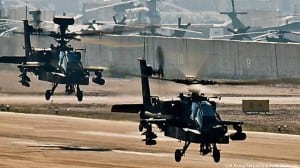
The Army National Guard not only is being forced to give up its AH-64 Apache attack helicopters, but it also does not enough funding to retrain reserve component Apache pilots to fly UH-60 Black Hawks, members of the National Commission on the Future of the Army said during a public meeting July 16 outside Washington, D.C.The Army already has begun transferring Apaches from the National Guard to active duty units under the aviation restructure initiative (ARI), replacing them with hand-me-down…

 By
By 











